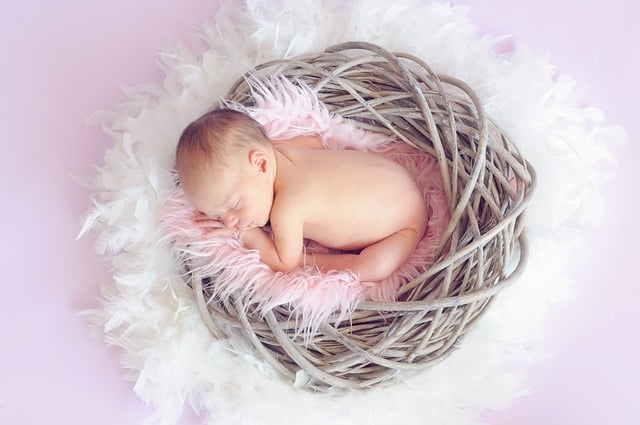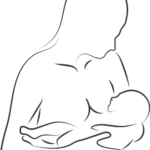Image credit to mybabyyo.com
Should You Use a Baby Walker There are plenty of baby products flooding the market, and although the usefulness of some may be subjective, others are not recommended by pediatricians at all—these include baby walkers.
Baby walkers have been available for many decades. Indeed, your parents might have used one with you as a baby. However, according to experts, there is actually no situation where a baby walker may be considered safe for a baby or even helpful in teaching your baby the skills he needs to learn walking. That is why the American Academy of Pediatrics has called for a ban on baby walkers. The recommendation, however, remains unsuccessful in pulling baby walkers off the market today.
Learn why baby walkers are dangerous and what really helps your baby learn to walk, along with the safe alternative ways against the baby walkers you can use in their place.
What Is a Baby Walker?
Many baby products are designed for that magical time when babies achieve the milestones of standing up and walking, such as baby activity centers and push walkers. But baby walkers are unique and have some specific risky characteristics, says Holly Choi, an infant and toddler safety educator and co-owner of Safe Beginnings First Aid.
“Baby walkers, for the purpose of this discussion, are fully contained baby seats on rolling wheels/casters that babies can move with their legs from a seated position before they are about to walk unassisted,” explains Choi. “Baby walkers allow for the child’s feet to make contact with the floor, allowing them to propel themselves along the floor.”
These types of devices—where your baby is held upright in a suspended seat in a device with a metal frame and wheels—are exactly what the AAP advises strongly against using.
Why Baby Walkers Aren’t Safe
One of the main reasons for the ban by the AAP is that these walkers can inflict serious injuries on children. Fortunately, fewer parents use baby walkers today. However, during the years when baby walkers were extremely popular, injuries from baby walkers topped the list as one of the major reasons for emergency room visits by babies 15 months old and below.
For instance, in Pediatrics, there is a study that estimated approximately 230,676 children visiting emergency rooms with injuries from baby walkers under 15 months from 1990 to 2014. Out of these, over 90% comprised head and neck injuries.
If you keep an eye on your baby while they are in the baby walker, then you may think it’s OK. However, the AAP reports that most injuries with baby walkers happen in just a matter of seconds, and most injuries happen while the caregiver is watching the baby. Parents and caregivers often don’t have enough time to respond before tragic accidents occur involving baby walkers.
Falls
The vast majority of injuries involving baby walkers occur when a baby falls down a flight of stairs in their baby walker. In the study in Pediatrics, more than 74 percent of the reported injuries were from falling down stairs.
“A baby in a walker can move very fast,” notes Loretta Cody, MD, a pediatrician and adjunct instructor at Sacred Heart University in Fairfield, Connecticut. “They can fall down stairs or run into objects before a parent can catch them. This can result in various forms of severe injuries such as head trauma and fractures.”
Burns
If a baby becomes mobile with the help of a baby walker, they will reach areas that they would otherwise not be able to. This increases their risk of exposure to something hot enough to cause a burn. Some examples are hot foods, radiators, stove handles, and space heaters, according to the AAP.
When babies are in walkers, they are at a higher level and can reach things that could harm them, says Dr. Cody. “For example, they may pull at a tablecloth and something on the table might fall down on them,” she says. “If this is hot coffee, they can get burned .”
Drowning
With baby walkers, drowning is also possible as babies can quickly propel themselves to locations where drowning can result. Drowning using a baby walker can occur in pools, bathtubs, and even toilets.
“Babies may reach in and fall into the pools or tubs in the walker,” says Preeti Parikh, MD, pediatrician and executive medical director at GoodRx.
Unsafe objects
In a baby walker, your infant may run into kitchen cabinets or walls, says Choi. Your baby may also reach unsafe objects like knives, scissors, batteries, and even medications.
If they put medications or other unsafe objects in their mouth, this could have dangerous consequences, she adds. The AAP warns that using baby walkers increases the likelihood of your baby being poisoned.
Baby Walkers and Learning To Walk
The reason many parents use a baby walker is to help their infant learn to walk; however, this isn’t the case. On the contrary, as Dr. Parikh says, a baby walker enhances bad walking habits in babies.
“When an infant is placed in a walker, it really promotes using their legs to try to walk, but when we want our infants to learn to walk, it is not only about the legs,” says Dr. Parikh. “The infant’s ability to pull themselves up to stand and be able to balance their weight is actually more important in promoting walking.”
Ultimately, it’s better for your baby to pull themselves up—like along a couch—and then cruise than it is for them to move their legs in a walker, she says. Plus, baby walkers promote “toe walking,” which can be detrimental to your child as they learn to walk, says Dr. Parikh.
Also Read : Everything You Need for Your Baby at 6-9 Months
Safe Alternatives to Baby Walkers
Who can blame you for wanting to resort to something like a baby walker when your little one’s approaching those tentative first steps? Babies love standing upright and trying out their skills; parents are always on the lookout for ways to keep their babies entertained. There are much safer devices out there that accomplish both of these things.
Compact activity center ????
First, you may want to consider an upright activity center for your baby. “They have no wheels and infants can not only rotate in them but also can pull themselves up to stand,” says Dr. Parikh. Activity centers often also have fun visuals, light-up elements, buttons to press, songs that play, and more.
play yard or playpen
If you really do want to keep your baby safe and contained, play yards or playpens are safe, says Dr. Parikh. You also can use a baby play divider to block off certain areas in your home so that your baby can get around safely. Make sure to get anything unsafe out of your baby’s reach if they are old enough to cruise—babies start to get mobile surprisingly fast!
Push walker
If you want your baby actually to be able to hold onto something while they walk, you may want to consider a “push walker,” which does not require placing your baby in a baby seat with wheels.
“If the caregiver’s goal is to encourage walking, ‘push walkers,’ are standing activity stations that do not contain a baby seat,” says Choi. Therefore, removing the risk of a child picking up enough speed to cause a traumatic injury.
The AAP says “push walkers,” like push cars or push wagons, can be a good alternative to baby walkers, especially if they are sturdy.
Helping Your Infant Learn to Walk Without a Baby Walker
Actually, you do not need to do anything specific to get your baby walking. Just provide a safe zone where he could crawl and move his body freely.
Dr. Parikh suggests floor time next to a couch or some other spot where they can safely pull themselves up to stand. “Sit on one side of the sofa and encourage them to cruise over to you,” she suggests. “You can also let them hold the sofa with one hand and hold onto you with the other hand for walking.
The one thing Dr. Parikh warns against is having your baby spend too much time in a bouncy chair or stroller. “It’s important your baby has a lot of floor time to help with mobility and build those muscles,” she says.
When Do Babies Learn To Walk?
Remember, all babies are very different when it comes to mastering the skill of walking. The range of normal is very wide. According to the AAP, although the average age of walking in babies is around 12 months, it is quite normal if your baby does so before or after.
“There certainly is no hurry to get your child to walk,” reassures Dr. Cody. “They will do it in their own good time.” She says by your baby’s 1-year-old checkup, the doctor will review your baby’s progress with walking. If your little one is pulling up and cruising by that point, chances are their pediatrician won’t be too concerned about walking, even if your baby isn’t taking steps yet.










